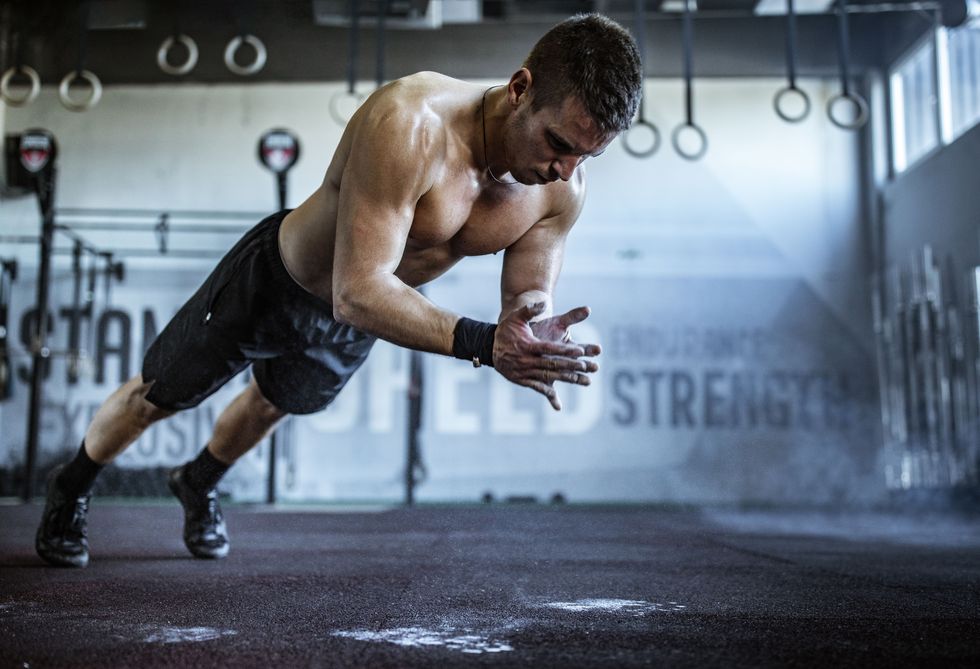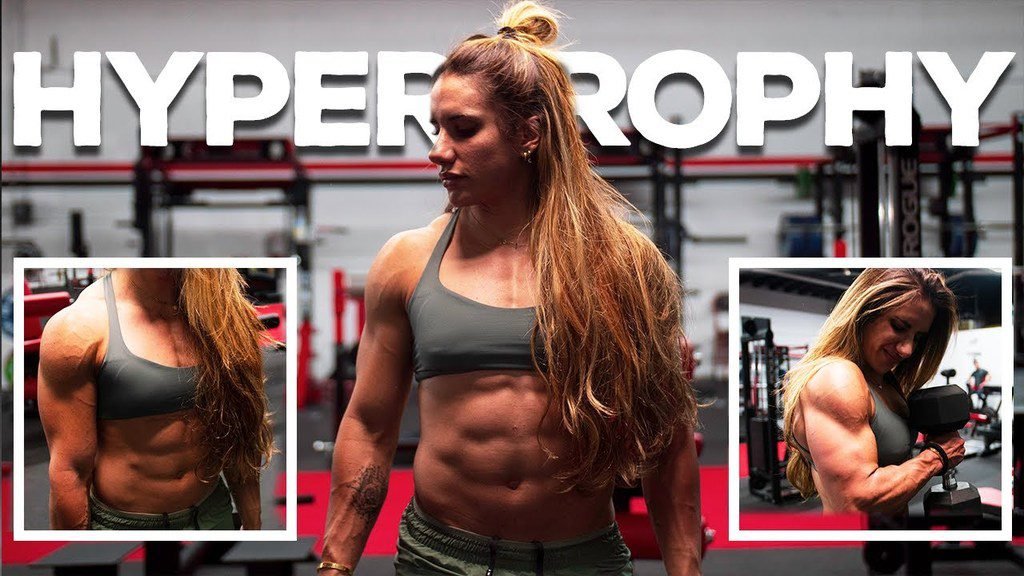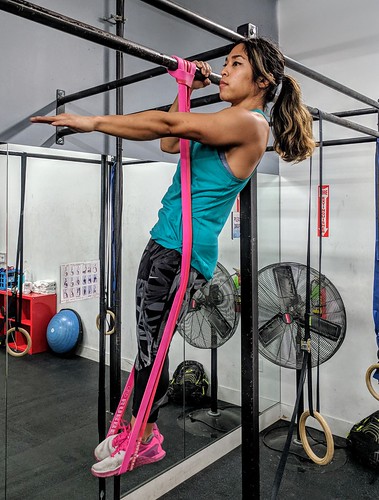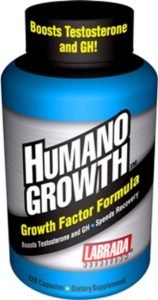Build BIG Muscle
Build BIG Muscle ,Using the SSE workout, you can start getting fitter and burning fat/building muscle right away.
But what if you want to become the next Arnold Schwarzenegger? Build BIG Muscle.
What if you want to become incredibly bulky, ripped and hench? In that case, you might think that your only option is to start lifting weights but you would be wrong – in fact, there are a number of ways you can build big muscle using bodyweight alone and it’s probably a lot easier than you suspect.

In this Build BIG Muscle article, we’re going to be looking at how building muscle works and we’re going to look at how you can do it using bodyweight. This is all about theory. Towards the end of the book we’ll be looking at the individual bodyweight moves you can use and providing a kind of glossary of exercises for you to dip in and out of. So read this and then apply it to those moves.
Although to be honest, you can do most of this with just the regular few bodyweight exercises you probably already know.
So let’s take a look at how to build BIG muscle…
Build insane strength, mad skills and gymnast-like body with progressive Calisthenics.
The most effective bodyweight strength training on Earth
Ready to discover what your body is truly capable of?
The ULTIMATE GUIDE to Getting Build BIG Muscle With Calisthenics
The most effective, natural strength training on Earth
▶️ Build Strength For Life… ▶️ Gain Muscles and Lose Fat … Simultaneously
▶️ Become More Flexible, Mobile&Healthy ▶️ Develop a Gymnast-like Physique
▶️Strengthen Your Joints, Naturally … ▶️Train Anytime … in Any place
The Science of Hypertrophy

Muscle growth in response to training is technically known as ‘hypertrophy’. Hypertrophy is what bodybuilding is all about and if you’re trying to look big and bulky, it’s what you need to be all about as well.
So the question is: how does hypertrophy work? How can you stimulate your body to produce more muscle?
And the answer is that you need to provide the body with volume. Volume is what defines the intensity of your training and it can come either from increasing the weight or from increasing the number of repetitions. Or both.
This then triggers changes in the muscle that causes it to grow and there is widely believed to be two different mechanisms through which this can occur:
Sarcoplasmic hypertrophy
Myofibrillar hypertrophy
Sarcoplasmic Hypertrophy

Sarcoplasmic hypertrophy is the type of hypertrophy that is caused when you increase the number of repetitions. This is the kind of muscle growth that you get when you train with rep ranges of around 12-15 or even higher. It’s also increased when you increase your ‘time under tension’ which is the amount of time you spend actually straining under the weight (rather than
setting it down to rest between sets).
When you increase the number of repetitions you perform and when you hold the weight in position, you are calling on your muscle’s endurance. This, in turn, relies on the amount of fluid
and the amount of energy (ATP) stored in the muscle cells – the sarcoplasm.
When you use this kind of training, it means that the muscle is constantly tensed and working. In turn, this causes the blood to ‘occlude’. In other words, it gets sent to the muscle and it stays there. This is also what causes us to get the feeling of ‘pump’ when we’re working out. As this happens, you also get a build-up of metabolites – muscle-building products that are found in the blood and that end up flooding the muscles. Metabolites include the likes of testosterone, growth hormone and IGF1. You also get a lot of nutrients here.
As a result, the muscle responds by growing and specifically by swelling and taking on more water mass. This gives the muscles a bigger, bloated look. They may be quite ‘soft’ but it’s a great way to get big fast and to increase your ability to perform large sets of exercise.
Sarcoplasmic Hypertrophy
Another thing that occurs as you train is that you create tiny tears in the muscle fiber. These are called ‘microtears’ and they’re so small as to not be damaging in any way or that painful (although this can lead to ‘DOMS’ the next day – delayed onset muscle soreness).

What these microtears can do though, is to cause the muscle to appear damaged to the body and that means it needs to get repaired. When you’re resting later on then, the body will use protein from your diet in order to rebuild the muscle and each of those muscle fibers will come back slightly thicker and slightly stronger than before. This increases size and strength and the best way to trigger this kind of hypertrophy is by training with heavyweights. This is how ‘powerlifters’ will train and it’s how they manage to get very strong lifting a weight only a few times.
What you also need to know about is the different types of muscle fiber. Your muscles have a number of different ‘kinds’ of muscle fibers that make them up and each has a slightly different role. In general, though, we can split these muscle fibers into two categories which are ‘fast-twitch’ and ‘slow-twitch’. Fast-twitch fibers are capable of creating greater acceleration and greater force – and that means that they are the most useful kinds for lifting heavyweights.
Your body will use these first when you move heavyweight and once they’ve become fatigued/torn, it will move on to the slower twitch fibers. Eventually, you don’t have enough power to move the weight – but some slow-twitch fibers will remain which will mean you’re still able to move your arms!
Building Strength
There’s something else that occurs here too though and that’s that you are also strengthening your ‘mind-muscle connection’. This is the ability of your brain to actually use the muscle you’ve got in order to exert force and the more you train, the greater that ability becomes.
Each time you contract a muscle, you do so by sending signals from your brain through your central nervous system. When that signal reaches the end of the nerve, acetylcholine is released across the ‘neuromuscular junction’ and this causes the muscle cells to fire.
As you do this repeatedly, you are actually able to increase the number of nuclei in your muscle cells (called myonuclei) which means that more of your muscle fibers can fire in response to that signal. This also contributes to extra muscle growth, because the number of nuclei is directly related to protein synthesis – the ability of the muscles to use the protein in your diet
to build muscle!
Making Sense of the Science
That’s a lot of science to take on board but don’t worry if you don’t follow it all.
All you really need to know is that lifting weights creates tears in the muscle fiber and builds up the amount of fluids in the muscle cells and that both these processes contribute to muscle growth and strength increases.
Both these processes also hurt slightly. No matter what anyone tells you (and some people try to deny this), working out to build muscle should be uncomfortable.
It’s a very specific type of pain and you shouldn’t push it too far. But building up lactic acid (which accumulates along with the metabolites) and tearing the muscle both cause the muscle to burn during your training and the next day. Ask any bodybuilder or athlete and they’ll say the
same thing. ‘No pain, no gain’. Now the trouble we face is going to be trying to get the muscle to grow using only our own bodyweight.
If you’re training with weights this is easy. All you have to do is add an extra 10kg to your bar and you’ve made it more difficult.
But if you’re training with your body, then things get significantly harder. Once you can do 100 press ups, how can you make it more difficult?
Fortunately, there are a number of tricks and methods we can use…
The good news is that your body doesn’t care whether you’re lifting a heavyweight or not. As far as your body is concerned, the amount of force is all that matters. So we can keep the weight the same (our bodies) as long as we increase the amount of force we’re using.
Changing the Angle
One way to make training more difficult is simply to change the angle of the exercise. This is called ‘extending the lever arm’ which basically means that we’re moving the weight (our body) further away from the point where we’re applying force. This then makes the exercise more difficult because the amount of force generated has to be greater.
The easiest way to demonstrate this is by doing a press up. Get into push up position as you normally would but now, instead of performing the press up like that, you’re going to move your arms down slightly (so that they’re level with the bottoms of your pecs) and you’re going to turn your hands to face slightly outward.
What you have just done is to extend the lever. You are now lifting more weight because your body is hanging over the top and the force needs to travel further along your arm and at an angle. Although the amount of weight hasn’t changed, the amount of force has. This is called a
‘Maltese press-ups’ by the way.
Increasing the Acceleration
As far as your muscle fiber is concerned, acceleration and strength are the same things. In other words, to contract your muscle quickly is the exact same thing as to contract your muscle hard.
This then means that we can now use something called ‘plyometrics’ in order to train the same explosive ‘fast-twitch’ muscle fibers that we would with a heavyweight. The perfect example?
Clapping press-ups! Simply perform press-ups as normal but launch yourself up into the air as high as you can and clap once or twice. In doing this, you are still performing press-ups with the same amount of weight but now you are launching yourself into the air through the sheer acceleration. You’ll find your fatigue a lot more quickly as a result!
How to Double the Weight
Want to quickly double the amount of weight that you’re using to lift yourself during a pull-up?

The very simple solution is to remove one arm from the bar. This way, you are now lifting the same amount of weight but with just one bicep, one lat and one side of your body. The same applies to press-ups and tricep dips and numerous other types of exercise.
At this point, you’re probably wondering how you ever get to the point where you can perform pull-ups with one hand. And the simple answer is to transition gradually! In other words, you can start by putting 70% of your weight on one hand and 30% on the other. This requires you to manipulate the amount of force you exert on each side too and in doing that, you’re improving your mind-muscle connection and also your agility and body control! Very cool.
To perform a pull up leaning slightly more to one side, then move more toward the other side on the next rep and continue to alternate like that. This way, you are going to be able to gradually build up the strength to lift yourself entirely on just one side eventually!

Humanogrowth Growth Hormone Formula. Save $25.96
Humanogrowth by Labrada is the most cutting edge testosterone boosting growth hormone formula scientifically designed to build maximum muscle at the fastest rate ever. Humanogrowth has shown serious muscle & strength gains by increasing IGF-1 and testosterone levels naturally in your body.
Using Intensity Techniques to Build Muscle With Bodyweight Moves
As you can see then, there are plenty of ways you can make bodyweight training hard. Can you do a handstand push up with one hand yet? Can you hold planche (arms on the Maltese push-up position, legs hovering behind you)? If not, then you haven’t exhausted all the possibilities
with bodyweight training yet!
The problem is that a lot of people just don’t apply these techniques right when doing bodyweight training to try and build muscle. They do 30 press-ups three times and then call it a day for pecs! Either that you they have a weak attempt at a Maltese push-up, or at a one-handed push-up and then they give up. But remember: to accomplish the very most growth you need to increase volume and that means the number of repetitions and the amount of weight.
And you need to find ways to push yourself a past failure. If you stop before you’re forced too then you won’t cause those micro tears and you won’t trigger that much growth.
This is where we can turn to bodybuilders for inspiration. They will combine a number of different exercises in unique ways in order to push past failure and increase their volume and their time under tension. These techniques are referred to as ‘intensity techniques’ or the ‘Joe Weider principles’.
They include things like drop sets – which involve lowering the weight each time you reach failure and then doing more reps. They also include supersets (switching quickly from one move to the next), giant sets (performing huge combinations of different exercises with no rest in between), burns (performing as much of the movement as they can once their muscles have tired out and given up), rest-pause (stopping halfway through the movement so that they aren’t able to rely on momentum to help them through), pre-exhaust (exhausting one muscle group
before an exercise so that the other muscles have to work on their own), cheats (cheating through the move so they can do just a couple more reps)… and more!
This is how you need to start thinking about your bodyweight training if you want to trigger maximum muscle growth.
That means that you don’t just do ‘three sets of ten’ all the time. Instead, you might use something called a ‘mechanical drop set’ which means that you make the weight lighter each time you fail but changing your position.
For instance, you could do:
Clapping press-ups to failure > Normal press-ups to failure > Press-ups on your knees to failure
Or:
One-handed pull-ups to failure > Two-handed pull-ups to failure > Assisted pulls up to failure Now you are fatiguing the fast-twitch muscle fibers multiple times during the movement and you are pushing yourself for a past failure. You’ve increased the weight, the time under tension and more and you should feel this start to burn in the muscle
Really focus on that – listen to your body and try to feel how your muscles are responding. Can you feel the pump and the burn? Are you getting the same kind of workout from this training as you would do by lifting very heavyweights in the gym? If it doesn’t feel hard enough, then you
need to go back to the drawing board and start making it harder!
You can even use ‘burns’ at the end of these sequences. So once you’ve done as many pull-ups as you can, you simply hang and perform as much of the movement as you can and feel the muscle burning as you do.
Who said that bodyweight workouts had to be easy?
Split for Bodyweight Muscle Building: Push, Pull, Legs
Note that for this kind of intense training, you should avoid training the same muscle group more than once a week. This isn’t like the SSE workout because it’s too much to do every body part like this every day.
Instead, split your workouts into three separate days:
- Push (press-ups, dips, shoulder press)
- Pull (pull-ups, biceps, chin-ups)
- Legs (squats, lunges, calf raises)
Use multiple exercises that are similar and repeatedly push each muscle group to failure. You can perform PPL once or twice a week and then just make sure to rest well and eat lots of protein during your off days.


